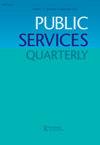Demystifying scholarly metrics: A practical guide
Q3 Social Sciences
引用次数: 0
Abstract
It seems like research metrics are everywhere. In promotion and tenure portfolios, grant applications, databases, and even curriculum vitae, authors are attempting to quantify the impact of their research. And those authors often turn to libraries and librarians to assist in this process. Vinyard and Colvin have developed a practical introduction to the topic of research metrics, suitable for both librarians and faculty. If you’re looking for a technical introduction to bibliometrics or want to rework the mathematical proof for Hirsch’s H-index, this book is not for you. But for anyone looking for a basic introduction to research metrics as they apply to institutional-level data, authors, journals, and books, then this guide will be an invaluable resource. The authors do a good job of placing research metrics within the context of current forms of scholarship, while also acknowledging the limitations and caveats involved in using any set of statistics as they relate to research productivity and impact. Of particular note are the details they provide about the challenges and options related to monographic measures. Research productivity and metric discussions often omit book metrics or any discussion related to the measure of the impact of monographic works. This is only one of several ways the authors have created a work that will be of use to librarians and faculty in all disciplines. The authors also include an informative, but brief, chapter on open-access options and how this publishing option relates to research metrics. There are other areas that distinguish this contribution to the field from other resources about research metrics. The authors develop a case study in chapter 7, “Publish, Don’t Perish! Applying What You’ve Learned,” that shows a Professor X and his efforts to put into practice the tracking, interpreting, and broader context of metrics for selected items on a hypothetical CV. While targeted to any reader, the chapter is particularly helpful for faculty who are trying to implement many of the strategies discussed elsewhere in the work. For librarians, chapter 8, “Developing or Finding Metrics Services at Your Library,” includes strategies for first evaluating the need for metrics services and then implementing strategies for the development or expansion of these types of services in libraries.揭开学术指标的神秘面纱:实用指南
研究指标似乎无处不在。在晋升和终身职位组合、拨款申请、数据库甚至简历中,作者都试图量化其研究的影响。在这个过程中,这些作者经常求助于图书馆和图书管理员。Vinyard和Colvin已经开发了一个实用的介绍研究指标的主题,适合图书馆员和教师。如果你正在寻找文献计量学的技术介绍,或者想要重新编写赫希h指数的数学证明,这本书不适合你。但是对于任何想要了解研究指标的人来说,这本指南将是一个非常宝贵的资源,因为它适用于机构级数据、作者、期刊和书籍。作者很好地将研究指标置于当前学术形式的背景下,同时也承认使用任何一组与研究生产力和影响相关的统计数据所涉及的局限性和警告。特别值得注意的是,它们提供了与专题措施有关的挑战和选择的细节。研究生产力和度量讨论经常忽略书本度量或任何与专题著作影响度量相关的讨论。这只是作者们创造了一个对所有学科的图书馆员和教师都有用的作品的几种方法之一。作者还包括一个信息丰富,但简短的章节,关于开放获取选项以及这种出版选项与研究指标的关系。还有一些其他的领域将这个领域的贡献与其他关于研究指标的资源区分开来。作者在第7章“出版,不要灭亡!”中发展了一个案例研究。应用你所学到的”,这显示了X教授在实践中对假设简历中选定项目的跟踪、解释和更广泛的指标背景所做的努力。虽然这一章是针对任何读者的,但对于那些试图实施本书中其他地方讨论的许多策略的教师来说,这一章特别有帮助。对于图书馆员,第8章“在您的图书馆开发或寻找度量服务”包括首先评估度量服务需求的策略,然后实施在图书馆中开发或扩展这些类型服务的策略。
本文章由计算机程序翻译,如有差异,请以英文原文为准。
求助全文
约1分钟内获得全文
求助全文
来源期刊

Public Services Quarterly
Social Sciences-Library and Information Sciences
CiteScore
0.90
自引率
0.00%
发文量
38
期刊介绍:
Public Services Quarterly covers a broad spectrum of public service issues in academic libraries, presenting practical strategies for implementing new initiatives and research-based insights into effective practices. The journal publishes research-based and theoretical articles as well as case studies that advance the understanding of public services, including reference and research assistance, information literacy instruction, access and delivery services, and other services to patrons. Articles may examine creative ways to use technology to assist students and faculty. Practice-based articles should be thoroughly grounded in the literature and should situate the work done in one library into the larger context of the situation.
 求助内容:
求助内容: 应助结果提醒方式:
应助结果提醒方式:


